#Pyroraptor olympius
Explore tagged Tumblr posts
Text
Day 9#: Pyroraptor olympius
Today's animal of the day is Pyroraptor olympius!
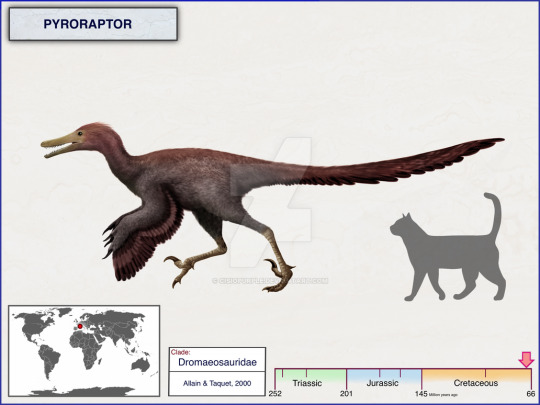
Image credit: cisiopurple on Deviantart
This species of dromaeosaurid dinosaur lived during the Late Cretaceous in what is now the South of France. It is known from very fragmentary remains, which were discovered shortly after a local forest fire, hence its name meaning "fire thief".


Image credit (top & bottom): @ElReptileano on Twitter (I refuse to call it X)
Not much is known about this dinosaur because its fossils are so fragmentary. Paleontologists aren't quite sure how big it was, since they aren't sure whether or not the remains they do have are from a fully grown individual or a juvenile, however, it is estimated to have been around the same size as Velociraptor, and probably a little smaller. What is known about Pyroraptor is the environment in which it lived. During the Late Cretaceous Southern France and Northern Spain were mostly covered by water and Pyroraptor would have lived on an archipelago of islands called the Ibero-Armorica. Many of the dinosaurs and other creatures that Pyroraptor shared its habitat with had undergone island dwarfism, as a way to adapt to the lack of space and resources on the island. So, it's likely that Pyroraptor was smaller as well.
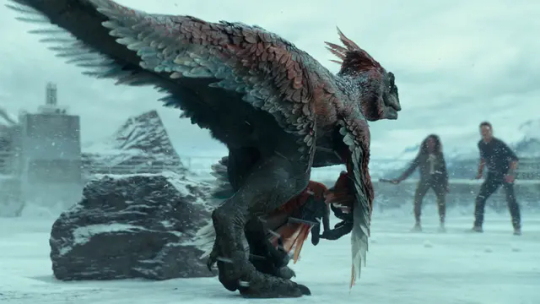
Image credit: Universal Studios
Some of you probably recognize Pyroraptor from Jurassic World: Dominion or season three of Jurassic World: Chaos Theory on Netflix. While it did make history as the first fully feathered raptor to appear in the movie franchise, it's by no means a perfect depiction of Pyroraptor. The creature depicted in the film and show is much bigger than the real-life animal, however, all of the raptors in this franchise are oversized and I will admit that I like that they made it smaller than both the Velociraptors and the Atrociraptors.
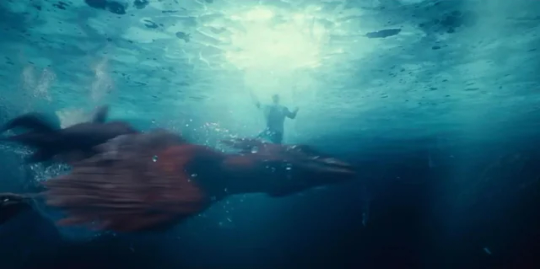
Image credit: Universal Studios
It's also shown diving into freezing cold water and swimming after its prey. Not going to lie, I audibly groaned during this scene when I saw Dominion in theaters. So, Pyroraptor probably could swim since most animals are capable of swimming even if they don't appear well-adapted to it. However, it doesn't have the right type of feathers to swim gracefully underwater like a penguin. I heard somewhere that the filmmakers gave it this ability since it's possible that real-life Pyroraptor potentially swam between nearby islands in search of food. But even if this was the case, it still wouldn't be swimming underwater in order to chase its prey. Also, Pyroraptor lived in a pretty tropical environment, so I don't know how well it would do after being submerged in icy water.

Image credit: Cryoll on Deviantart
Personally, I liked it better in Chaos Theory in Dominion since it had more than one scene and actually felt threatening. I will give them credit for showing dinosaurs in a cold environment, especially since the people in charge of making Jurassic World: Rebirth seem to think dinosaurs can't survive outside of the tropics. Sorry for ranting about the Jurassic franchise, I just wanted to clear up any misconceptions people had about Pyroraptor because of Dominion. Also, I have a love-hate relationship with this franchise and a lot of mixed feelings about the upcoming movie.
#animal of the day#animals#nature#dinosaur#cretaceous period#jurassic world chaos theory#jurassic world dominion#info dump#pyroraptor#raptor#dromaeosaur#feathered dinosaurs#feathered raptor#paleontology#paleoblr
6 notes
·
View notes
Text
Pyroraptor olympius dashing across a rocky shoreline.
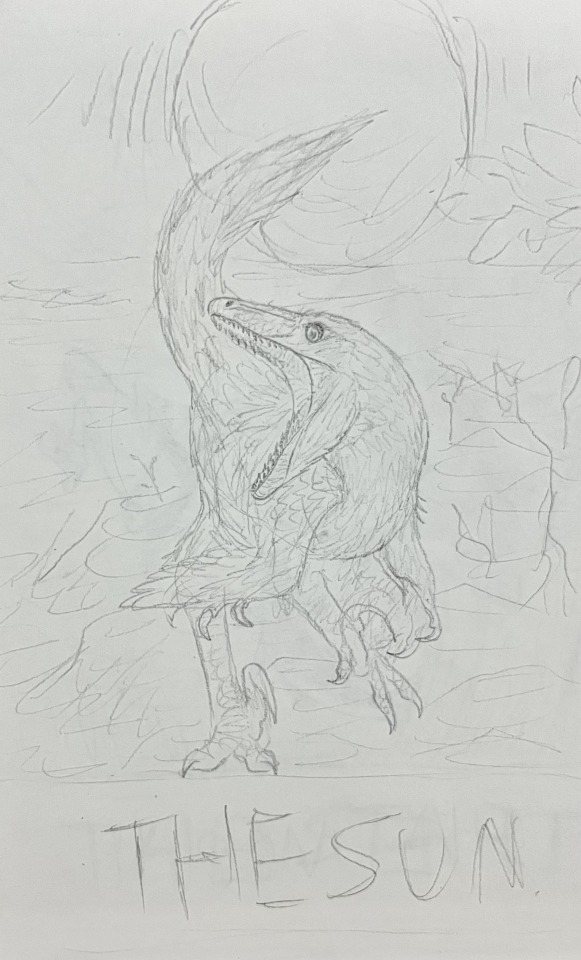
@1dinodaily
56 notes
·
View notes
Text


Creative Beast Studios Beasts of the Mesozoic Pyroraptor olympius ("Fans' choice" edition)
23 notes
·
View notes
Text
Pyroraptor olympius
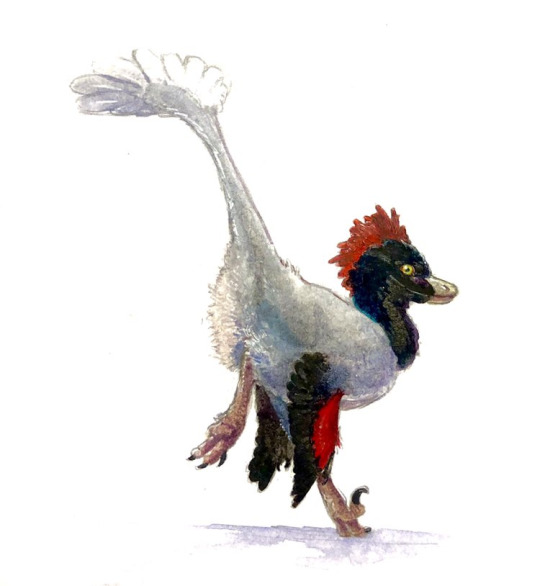
By Ripley Cook
Etymology: Fire Thief
First Described By: Allain & Taquet, 2000
Classification: Dinosauromorpha, Dinosauriformes, Dracohors, Dinosauria, Saurischia, Eusaurischia, Theropoda, Neotheropoda, Averostra, Tetanurae, Orionides, Avetheropoda, Coelurosauria, Tyrannoraptora, Maniraptoromorpha, Maniraptoriformes, Maniraptora, Pennaraptora, Paraves, Eumaniraptora, Dromaeosauridae
Status: Extinct
Time and Place: Around 72 million years ago, in the Campanian of the Late Cretaceous

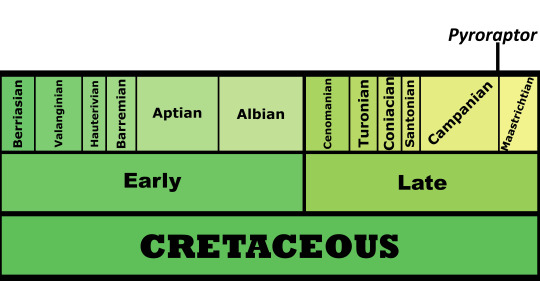
Pyroraptor is known from the La Boucharde locality in France, the Vitoria and La Posa Formations in Spain, and potential locations in the UK

Physical Description: Pyroraptor is a poorly known raptor, based on a few fossil scraps found around the late Cretaceous of Europe. Portions of the foot, arms, and some teeth are known from Pyroraptor, none preserved very well. It had the sickle second toe claw of other raptors, and it seems to have been fairly lightweight and small - probably no longer than 1.4 meters, though that is of course an estimate. Other than that, we know very little about its appearance - we don’t even know if it was a specialized sort of raptor like in the Dromaeosaurine, Microraptorine, or other groups - except for that it would have been very fluffy, with wings on its arms and a tail fan on its tail.
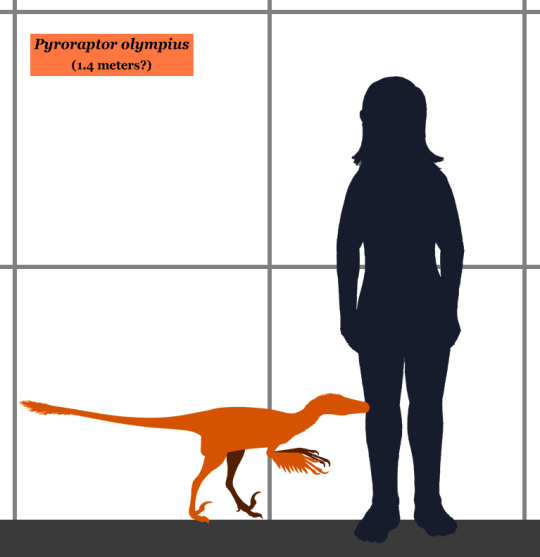
By Conty, CC BY 3.0
Diet: As a raptor, it is most likely that Pyroraptor fed upon meat, probably small animals such as lizards, mammals, and turtles.
Behavior: Pyroraptor would have been a very active dinosaur, spending most of its time hopping and stalking around the rivers and beaches in its island environment. Like other raptors, it wouldn’t have been a pursuit predator, but rather an ambush one: it would have waited for prey to appear, and then pounced on it, using rapid flaps of its wings to stay balanced on top of the struggling prey. This technique, called raptor prey restraint, is still seen in living raptors today. Pyroraptor would have also been able to run up vertical surfaces, such as trees and cliffs, using flaps of its wings to gain lyft up the surface. Then, it would have been able to catch food on the run! Other than that, Pyroraptor probably wasn’t very social, based on fossil evidence from other raptors - that being said, it would have taken care of its young, and probably stayed in small family groups during this process.
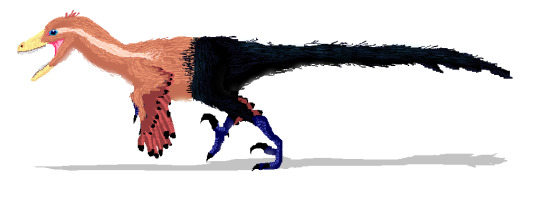
By The Unknown Horror From the Ocean Depths, CC BY-SA 4.0
Ecosystem: Pyroraptor lived in the Late Cretaceous of Western Europe, which was a series of islands sitting in a shallow ocean - sort of like the Bahamas today. These ecosystems were easy to travel between, utilizing rafting and other forms of impromptu sea travel, so the animals on them tended to be similar to each other. Pyroraptor itself lived with many turtles, snakes, sharks, and gars; as well as Eusuchians such as Musturzabalsuchus and Acynodon. There was some sort of large Azhdarchid pterosaur, too - currently called Azhdarcho, though that’s a questionable assignment. As for other dinosaurs, there were Abelisaurids there, Titanosaurs like Lirainosaurus, Nodosaurids like Struthiosaurus, the Ornithopod Rhabdodon, and another raptor called Richardoestesia, and the protobird Gargantuavis!
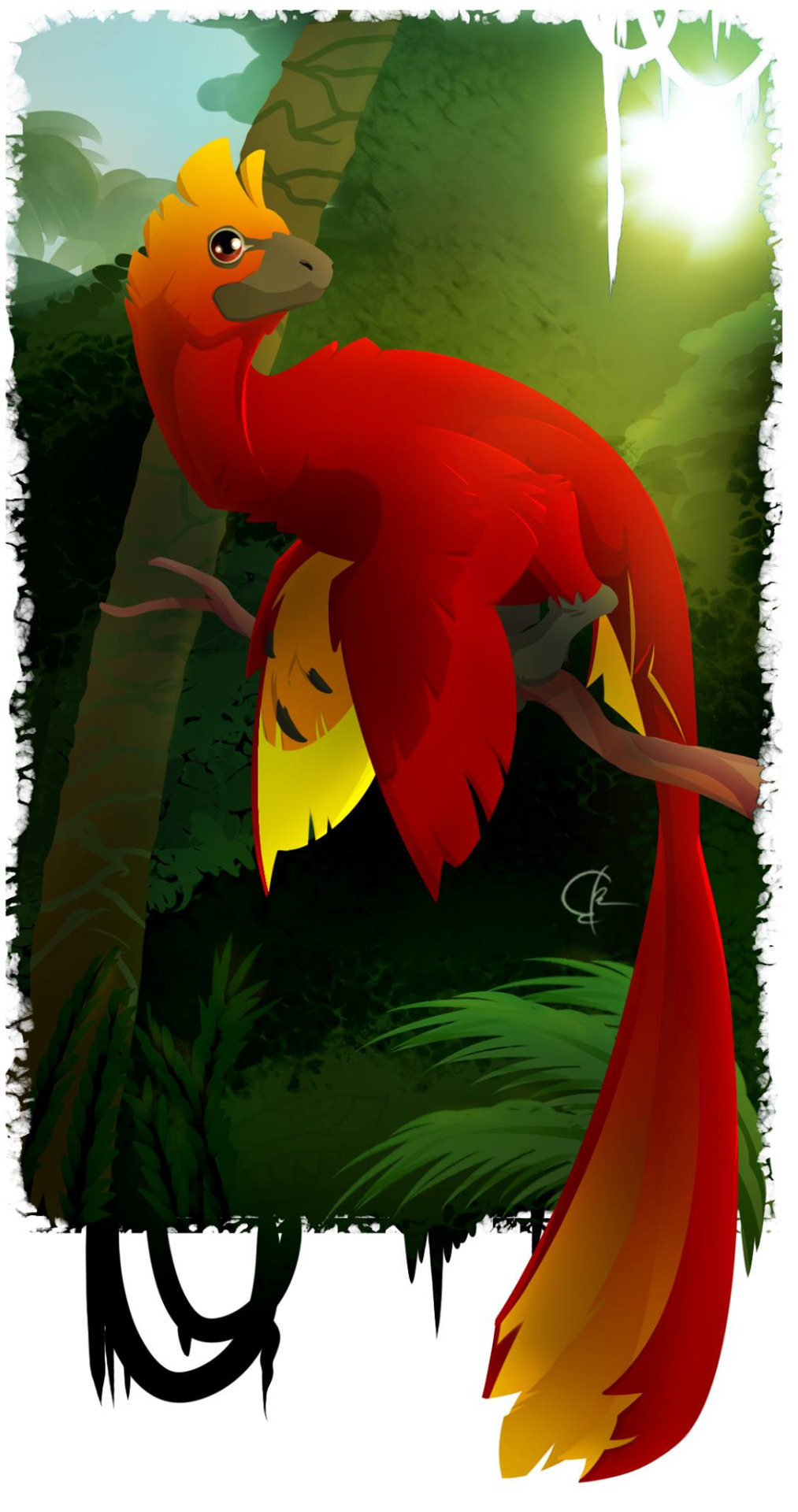
By José Carlos Cortés
Other: Pyroraptor was named as such because it was discovered after the occurence of a forest fire. Since so little is known about this dinosaur, there isn’t much more to be said about its phylogenetics or history of discovery! It is rather famous for having been featured in the 2003 documentary Dinosaur Planet, though given its poorly preserved nature, the wisdom in that choice of star is mildly suspect.
~ By Meig Dickson
Sources Under the Cut
Allain, R. and P. Taquet. 2000. A new genus of Dromaeosauridae (Dinosauria, Theropoda) from the Upper Cretaceous of France. Journal of Vertebrate Paleontology 20(2):404-407
Allain, R., and X. Pereda Suberbiola. 2003. Dinosaurs of France. Comptes Rendus Palevol 2:27-44
Angst, D., E. Buffetaut, J. C. Corral and X. Pereda-Suberbiola. 2017. First record of the Late Cretaceous giant bird Gargantuavis philoinos from the Iberian Peninsula. Annales de Paléontologie
Astibia, H., E. Buffetaut, A. D. Buscalioni, H. Cappetta, C. Corral, R. Estes, F. Garcia-Garmilla, J. J. Jaeger, E. Jiminez-Fuentes, J. Le Loeuff, J. M. Mazin, X. Orue-Etexebarria, J. Pereda-Suberbiola, J. E. Powell, J. C. Rage, J. Rodriguez-Lazaro, J. L. Sanz and H. Tong. 1990. The fossil vertebrates from the Lano (Basque Country, Spain); new evidence on the composition and affinities of the Late Cretaceous continental faunas of Europe. Terra Nova 2:460-466
Carpenter, K. (1998). "Evidence of predatory behavior by theropod dinosaurs". Gaia. 15: 135–144.
Carpenter, K. 2002. Forelimb biomechanics of nonavian theropod dinosaurs in predation. Senckenbergiana Lethaea 82: 59 - 76.
Carrano, M. T., and S. D. Sampson. 2008. The phylogeny of Ceratosauria (Dinosauria: Theropoda). Journal of Systematic Palaeontology 6(2):183-236
Chanthasit, P., and E. Buffetaut. 2009. New data on the Dromaeosauridae (Dinosauria: Theropoda) from the Late Cretaceous of southern France. Bulletin de la Société Géologique de France 180(2):145-154
Delcourt, R., and O. N. Grillo. 2014. On maniraptoran material (Dinosauria: Theropoda) from Vale do Rio do Peixe Formation, Bauru Group, Brazil. Revista Brasileira de Paleontologia 17(3):307-316
Erickson, G. M., K. Curry Rogers, D. J. Varricchio, M. A. Norell, X. Xu. 2007. Growth patterns in brooding dinosaurs reveals the timing of sexual maturity in non-avian dinosaurs and genesis of the avian condition. Biology Letters 3 (5): 558 - 61.
Fowler, D. W., E. A. Freedman, J. B. Scannella, R. E. Kambic. 2011. The Predatory Ecology of Deinonychus and the Origin of Flapping in Birds. PLoS ONE 6 (12): e28964.
Gauthier, J., K. Padian. 1985. Phylogenetic, Functional, and Aerodynamic Analyses of the Origin of Birds and their Flight. Hecht, M. K., J. H. Ostrom, G. Viohl, P. Wellnhofer (ed.). The Beginnings of Birds. Proceedings of the International Archaeopteryx Conference, Eichstätt: Freunde des Jura-Museums Eichstätt: 185 - 197.
Gishlick, A. D. 2001. The function of the manus and forelimb of Deinonychus antirrhopus and its importance for the origin of avian flight. In Gauthier, J., L. F. Gall. New Perspectives on the Origin and Early Evolution of Birds. New Haven: Yale Peabody Museum: 301 - 318.
Godefroit, P., P. J. Currie, H. Li, C. Y. Shang, and Z.-M. Dong. 2008. A new species of Velociraptor (Dinosauria: Dromaeosauridae) from the Upper Cretaceous of northern China. Journal of Vertebrate Paleontology 28(2):432-438
López-Martínez, N. 2000. Eggshell sites from the Cretaceous-Tertiary transition in south-central Pyrenees (Spain). In A. M. Bravo & T. Reyes (ed.), First International Symposium on Dinosaur Eggs and Babies, Extended Abstracts 95-115
Manning, Phil L., Payne, David., Pennicott, John., Barrett, Paul M., Ennos, Roland A. (2005) "Dinosaur killer claws or climbing crampons?" Biology Letters (2006) 2; pg. 110-112.
Martyniuk, M. 2016. You’re Doing It Wrong: Microraptor Tails and Mini-Wings. DinoGoss Blog.
Pereda-Suberbiola, X., H. Asibia, X. Murelaga, J. J. Elzorza, and J. J. Gomez-Alday. 2000. Taphonomy of the Late Cretaceous dinosaur-bearing beds of the Lano Quarry (Iberian Peninsula). Palaeogeography, Palaeoclimatology, Palaeoecology 157:247-275
Prum, R.; Brush, A.H. (2002). “The evolutionary origin and diversification of feathers”. The Quarterly Review of Biology. 77 (3): 261–295.
Rothschild, B., Tanke, D. H., and Ford, T. L., 2001, Theropod stress fractures and tendon avulsions as a clue to activity: In: Mesozoic Vertebrate Life, edited by Tanke, D. H., and Carpenter, K., Indiana University Press, p. 331-336.
Senter, P., R. Barsbold, B. B. Britt and D. A. Burnham. 2004. Systematics and evolution of Dromaeosauridae (Dinosauria, Theropoda). Bulletin of the Gunma Museum of Natural History 8:1-20
Torices Hernández, A. 2002. Los dinosaurios terópodos del Cretácico Superior de la Cuenca de Tremp (Pirineos Sur-Centrales, Lleida). Coloquios de Paleontología 53:139-146
Torices, A., P. J. Currie, J. I. Canudo and X. Pereda-Suberbiola. 2015. Theropod dinosaurs from the Upper Cretaceous of the South Pyrenees Basin of Spain. Acta Palaeontologica Polonica 60(3):611-626
Turner, Alan H.; Pol, D.; Clarke, J.A.; Erickson, G.M.; Norell, M. (2007). “A basal dromaeosaurid and size evolution preceding avian flight”. Science. 317 (5843): 1378–1381.
Turner, AH; Makovicky, PJ; Norell, MA (2007). “Feather quill knobs in the dinosaur Velociraptor”. Science. 317 (5845): 1721.
Vila, B., M. Suñer, A. Santos-Cubedo, J. I. Canudo, B. Poza and A. Galobart. 2011. Saurischians through time. In A. Galobart, M. Suñer, & B. Poza (eds.), Dinosaurs of Eastern Iberia 130-168
Weishampel, David B.; Dodson, Peter; and Osmólska, Halszka (eds.): The Dinosauria, 2nd, Berkeley: University of California Press. 861 pp.
Xu, X.; Zhou, Z.; Wang, X.; Kuang, X.; Zhang, F.; Du, X. (2003). “Four-winged dinosaurs from China”. Nature. 421 (6921): 335–340.
#Pyroraptor olympius#Pyroraptor#Raptor#Dinosaur#Bird#Birblr#Palaeoblr#Dromaeosaur#Dinosaurs#Factfile#Birds#Cretaceous#Eurasia#Carnivore#Theropod Thursday#paleontology#prehistory#prehistoric life#biology#a dinosaur a day#a-dinosaur-a-day#dinosaur of the day#dinosaur-of-the-day#science#nature#Feathered Dinosaurs
386 notes
·
View notes
Text

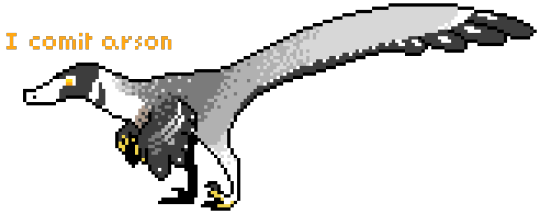
The other day my pc stopped working but i managed to fix it and then proceeded to do this to celebrate.
69 notes
·
View notes
Photo

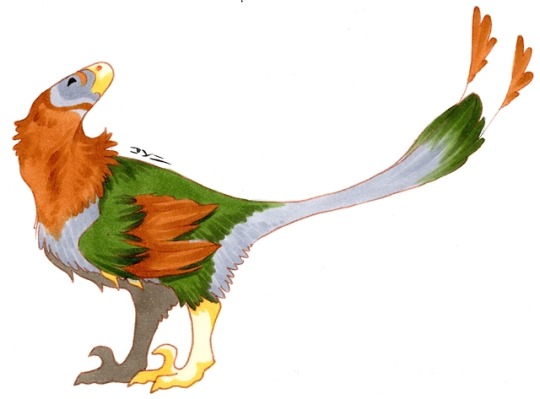
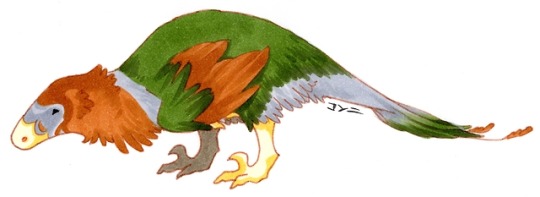
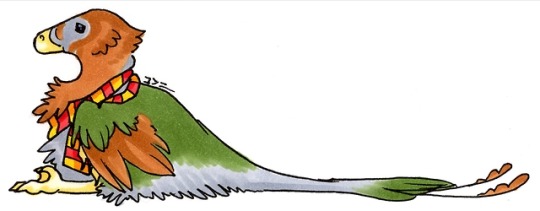
#drawing#copic#copic markers#oc#gideon#dinosaur#pyroraptor#pyroraptor olympius#dromaeosaur#cretaceous#southern france#he's a gryffindor
12 notes
·
View notes
Text
Work Boredom Strikes Again!
So, while working in the museum galleries, ADHD brain likes to wander to all sorts of places! Well, it decided to fixate on two things I enjoy, Greek Mythology, and dinosaurs.
So, pretty much most if not all the Greek Pantheon have a bird sacred to them right? Zeus has the eagle, Athena the owl, Ares the vulture, Hera the peacock, etc. etc.
So then my paleontology loving self thought “What non-avian dinosaurs could be symbols for the Greek deities?” So, I wrote down the ones I thought of, which is...not many, but I’ll share the ones i DID think of below the cut. Note, if a god doesn’t appear, it’s because I haven’t decided on one yet, and am open to suggestions.
Zeus: Tyrannosaurus rex. C’mon, the most iconic and popular theropod of all time, the “King of Dinos”, how could it NOT go to the King of Olympus?
Also Carnotaurus. “Meat-eating Bull”. Bulls were also associated with Zeus, sooo...why not?
Poseidon: Sauroposeidon. ...It’s named after him, need I say more?
Also Spinosaurus. Whether you go for the aquatic pursuit predator, or stork-like wading model for hunting, Spinosaurus was clearly adapted to a lifestyle with lots and lots of water. It’s big, it’s WEIRD, and growing as an icon. I also personally find it rather regal looking with that sail, I think it’d fit Poseidon, King of the Seas, well....
Hades: Acheroraptor It’s essentially named after one of the rivers in the Underworld, that’s....really all I got.
Ares: Allosaurus Another pretty iconic theropod, sadly overshadowed by T. rex, but no less deadly. This beast was tough, many gruesome, but healed over, injuries have been found on Allosaurus remains, the most famous of which being Big Al. It’s also been theorized that they might’ve used their jaws like a battle axe to make up for a relatively low bite force; swinging their head down to chomp down on their prey. They could take quite a bit of damage, but also dish it out. Seems like a good fit for the mighty God of War in my opinion. (this is also my favorite large theropod and Ares is one of my favorites but I swear this has nothing to do with my choice...)
Hermes: Microraptor. IT’S GOT LEG WINGS!!!! How could that NOT become a reference to Hermes’ winged sandals? It’s a small, cute, gliding dino, and I imagine it’d be incredibly mischievous. It’s also one of the few non-avian dinos we know the color of due to fossilized melanosomes. An iridescent blue/black, like crows and ravens. (Also another fav of mine...)
Hephaestus: Ankylosaurus. Heavily armored with a HAMMER/CLUB LIKE TAIL. As a god who uses hammers and other tools, and known to make weapons and armor, I think an armored beast such as this would suit him.
BONUS! I know he’s not an Olympian god, but he was the one that started this train of thought!
Prometheus: Pyroraptor. It’s full name, Pyroraptor olympius, pretty much translates to “Fire-thief of Olympus” or “Olympic Fire-Thief”. If that’s not Prometheus then WHAT? ....Also I’m desperate need of art featuring a cute little feathered raptor running from Mt. Olympus with a torch in his jaws....
Sadly these are the only ones I’ve thought of. I hate how I couldn’t figure out any possibilities for the goddesses! Need one suitably beautiful for Aphrodite, or regal for Hera....hmm..
I DID settle on the idea of a hadrosaur of some sort for Apollo, but not which one. Reason being due to the fact they were LOUD, likely VERY VOCAL, and we’ve simulated what they could’ve sounded like. THe god of music should have something known for lots of sound. Also the wide array of lovely crests many had would suit him as he’s also a beautiful god.
#Greek Mythology#dinosaurs#this is what happens when I get bored at work...#if there are any Greek Myth lovers who are also dino nerds PLEASE OFFER ME SUGGESTIONS!
9 notes
·
View notes
Text
Anyway here is a (very rough and likely very proportionally innacurate) wip doodle of Pyroraptor. olympius.
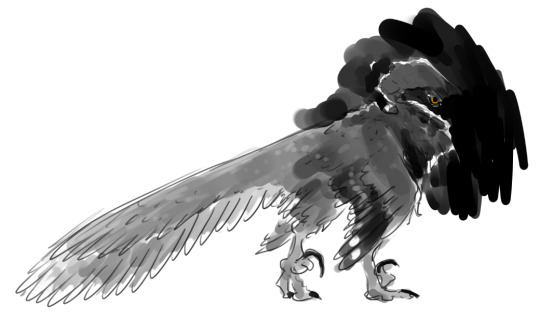
I'm hoping i can get this done before going back to school on wendsday.
70 notes
·
View notes
Note
i wanna know what kirby’s fave dinosaur would be!!! 🤩🤩🤩 (i love hearing abt other ppls special interests pls give me the Dino facts but only if u want of course!!!)
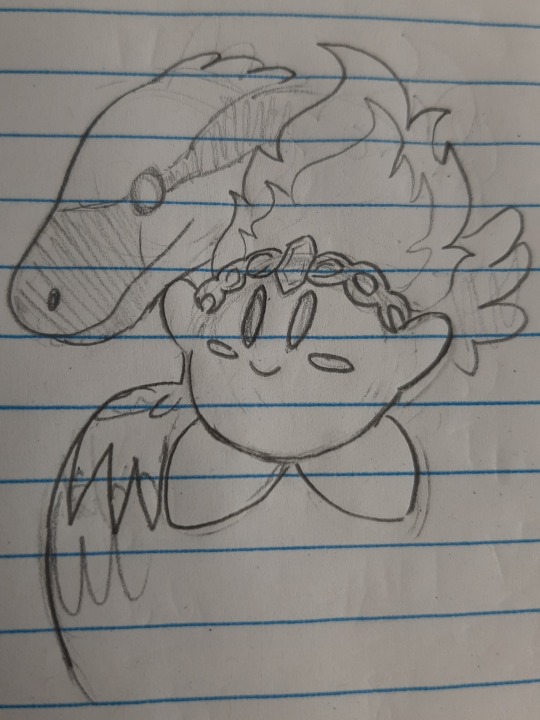
Thank u anon,,, you are very kind,,, I'm not sure what kirby would like but I can see him liking a feathered boy maybe? This is Pyroraptor and Fire kirby... heehoo
As for as fact, Pyroraptor Olympius ( name means olympic fire thief ) was named this because of its remains being discovered after a forest fire
#my art#kirby#Pyroraptor#the Olympus part is because something something mount olympus#i do not rememeber#thank u for being kind *sobs into my hands*
12 notes
·
View notes
Text

A pyroraptor olympius, since I have a figurine of him, getting wasted at a bar.
5 notes
·
View notes
Photo
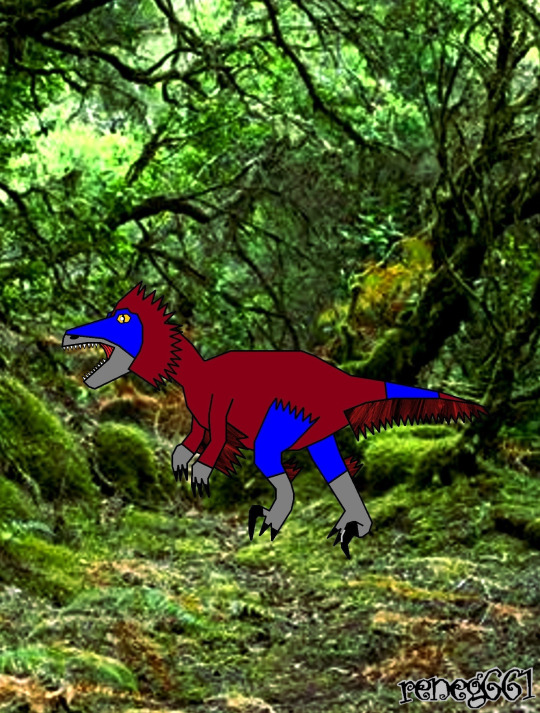
Is an extinct genus of paravian dinosaur, probably a dromaeosaurid or unenlagiid, from the Late Cretaceous Ibero-Armorican island, of what is now southern France and northern Spain. It lived during the late Campanian and early Maastrichtian stages, approximately 70.6 million years ago. It is known from a single partial specimen that was found in Provence in 1992, after a forest fire. The animal was named Pyroraptor olympius by Allain and Taquet in 2000.
Pyroraptor (c) Jurassic World Dominion Art (c) reneg661
1 note
·
View note
Photo

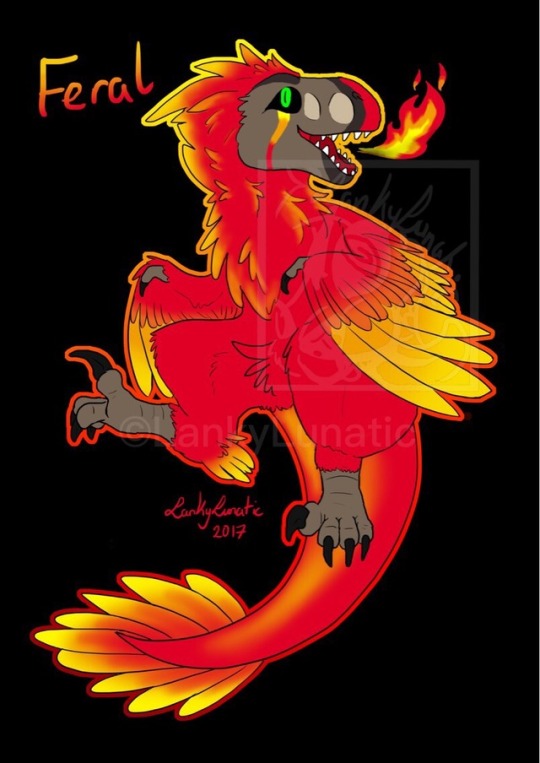
Halp me I accidentally created a new character :') Meet Feral the Pyroraptor! (Any dinosaur fans will get this!) This tiny fire bab is quiet the handful! Small, energetic and mischievous, Feral tends to leave burn marks anywhere he roams! I was doing some practise sketches and really liked one I had of a raptor head so I decided to go a little further and give it Colour! I ended up loving the look and whipped up a quick little Fullbody to go with it! For those of you who don't know a Pyroraptor is a real dinosaur that was found in France. It's name, Pyroraptor Olympius, means Olympic Fire thief, and it got this name as the fossil was found after a forest fire! I decided to one Feral fire elemental powers to coincide with his species name and colours! :D I need to stop making so many characters :')
5 notes
·
View notes
Text
Pyroraptor olympius
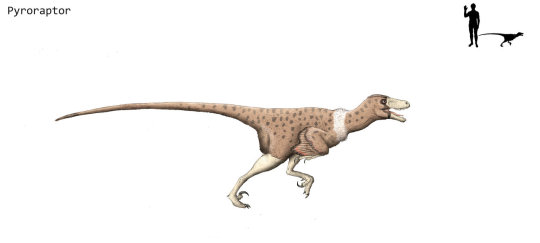
Source: http://hyrotrioskjan.deviantart.com/art/Pyroraptor-243694249
Name: Pyroraptor olympius
Name Meaning: Olympic Fire Theif
First Described: 2000
Described By: Allain & Taquet
Classification: Dinosauria, Saurischia, Eusaurischia, Theropoda, Neotheropoda, Averostra, Tetanurae, Orionides, Avetheropoda, Coelurosauria, Tyrannoraptora, Maniraptoriformes, Maniraptora, Pennaraptora, Paraves, Eumaniraptora, Dromaeosauroidea, Dromaeosauridae
Pyroraptor has such a fascinating name because it was actually discovered after a forest fire. It was found It was found in Provence, southern France, and is only known from scattered bones. It lived about 70.6 million years ago, in the Maastrichtian age of the late Cretaceous. It would probably have been around the size of Velociraptor, though that is somewhat unknown. It was found near the dromaeosaurid Variraptor, however it was determined that enough differences were present for it to be a different genus.
Sources:
http://www.prehistoric-wildlife.com/species/p/pyroraptor.html
http://en.wikipedia.org/wiki/Pyroraptor
Shout out goes to hikingecologist!
#pyroraptor#pyroraptor olympius#hikingecologist#raptor#dinosaur#dinosaurs#a dinosaur a day#a-dinosaur-a-day#dinosaur of the day#dinosaur-of-the-day#science#nature#biology#paleontology#prehistory#prehistoric life#factfile
97 notes
·
View notes
Photo
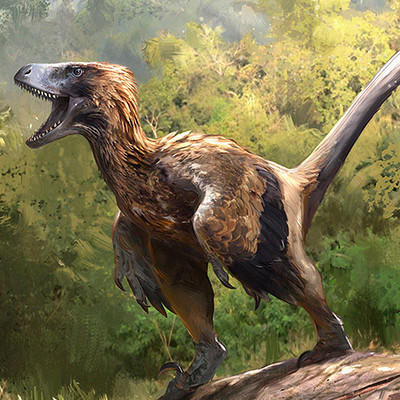
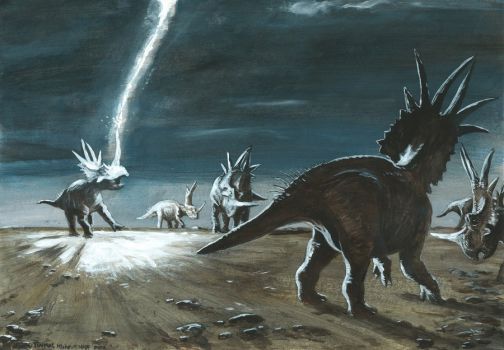
Pyroraptor Olympius, or the “Fire Thief of Olympus” is a genus of dromaeosaurid that lived during the Late Cretaceous, during the late Campanian and early Maastrichtian stages, approximately 70.6 million years ago, in what is now Southern France. But you see, the Pyroraptor is interesting for another reason because clearly, it stole fire from the gods of Olympus. This is of course why the dinosaurs are all dead, Zeus was upset about Pyroraptor one-upping him.
#dinosaurs#pyroraptor olympius#fire thief of olympus#dromaeosaur#late cretaceous#late campanian#early maastrichtian#zeus#dinosaur extinction
8 notes
·
View notes
Photo
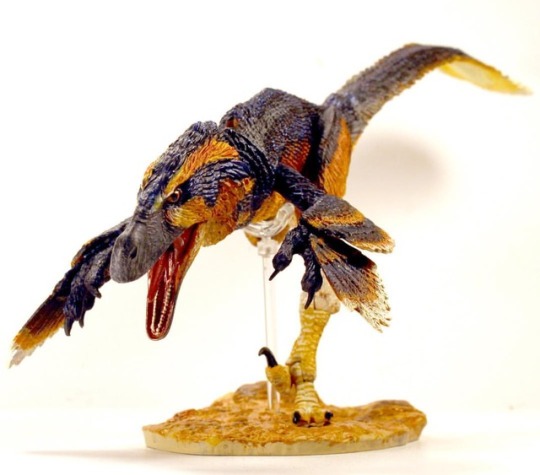
This Pyroraptor is all fired up about today's Beasts of the Mesozoic deco sample gallery. Check out all of the Fans Choice Pyroraptor olympius pics later today on the Creative Beast Studio Facebook page! #beastsofthemesozoic #dinosaur #actionfigure #raptor #toys #actionfigurephotography #prehistoric #animals #naturalhistory #pyroraptor #facebook #gallery
#dinosaur#pyroraptor#actionfigurephotography#gallery#actionfigure#prehistoric#toys#animals#naturalhistory#beastsofthemesozoic#facebook#raptor
0 notes